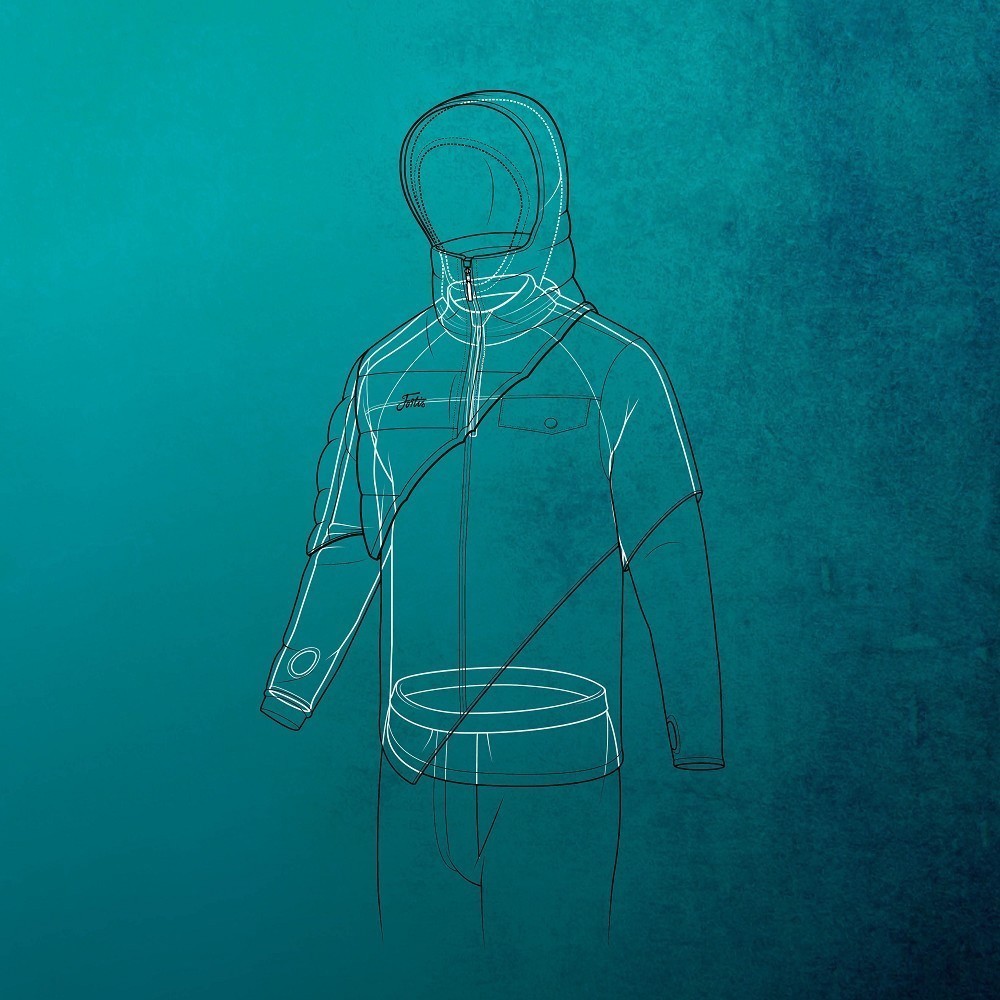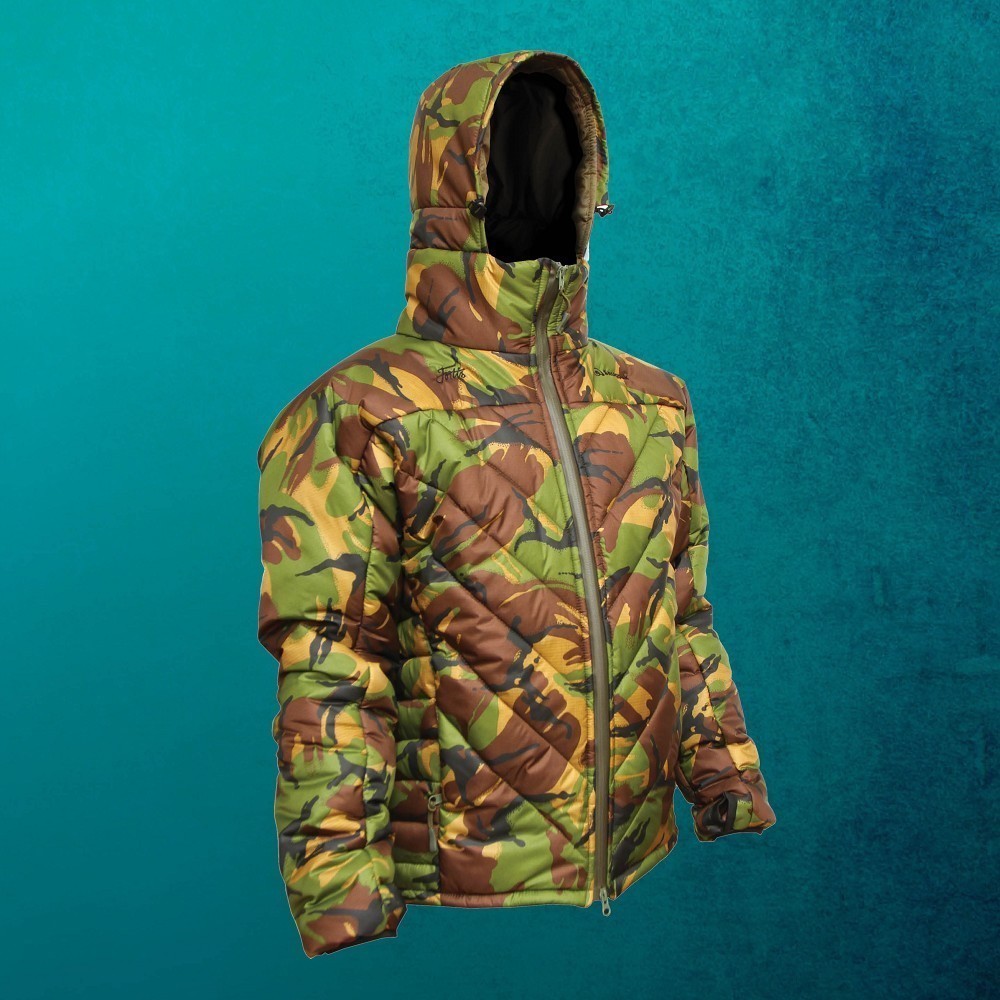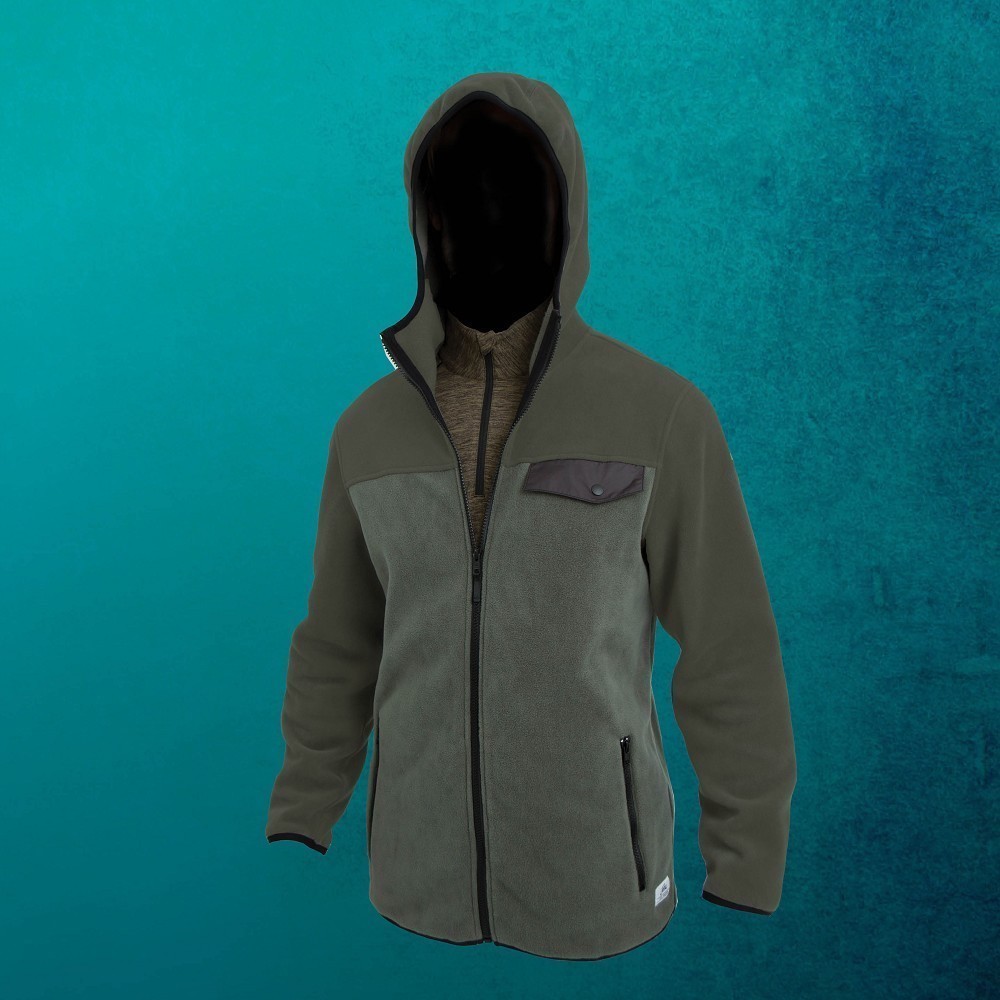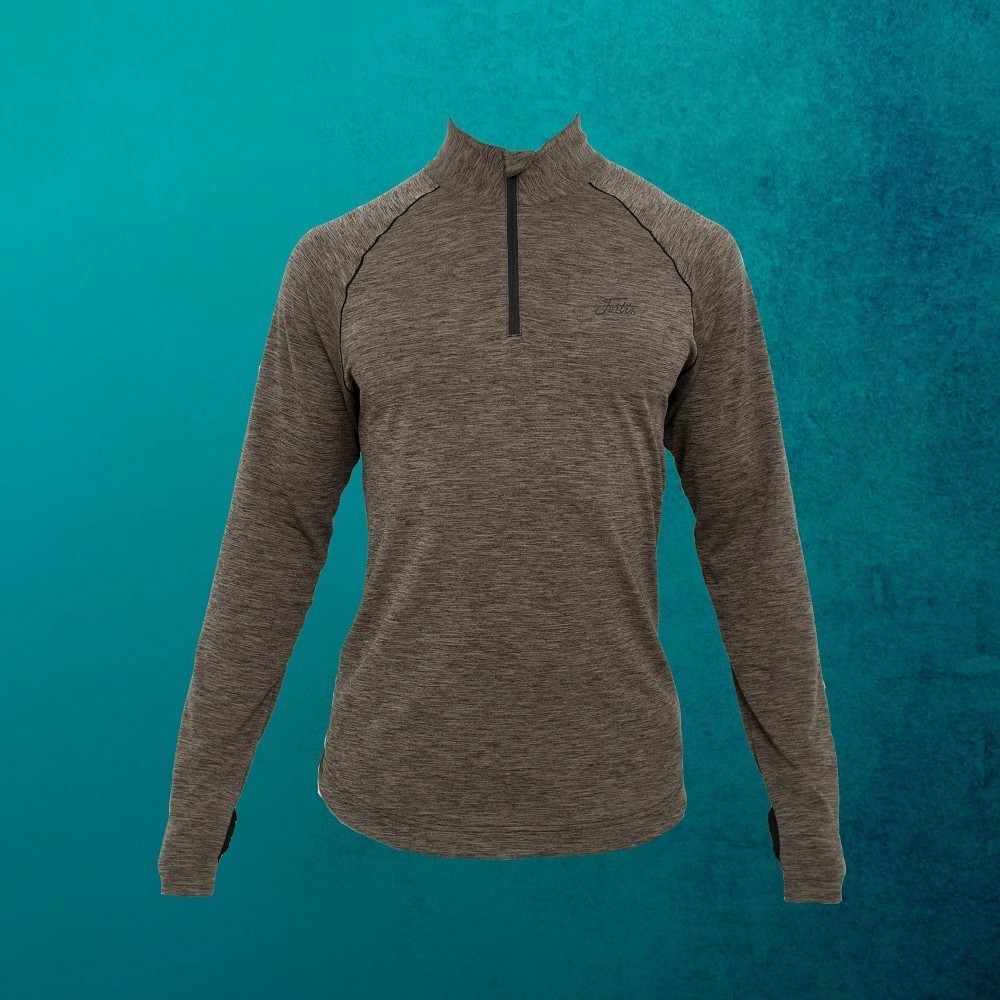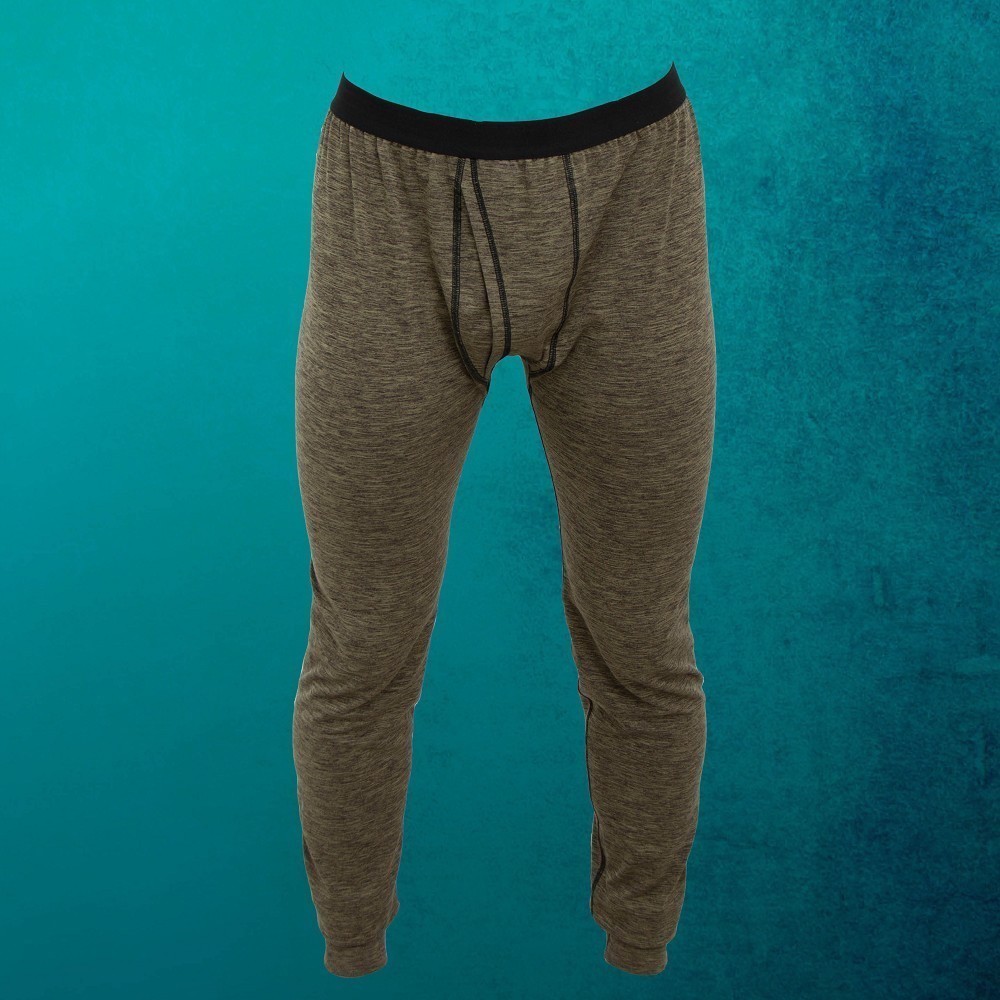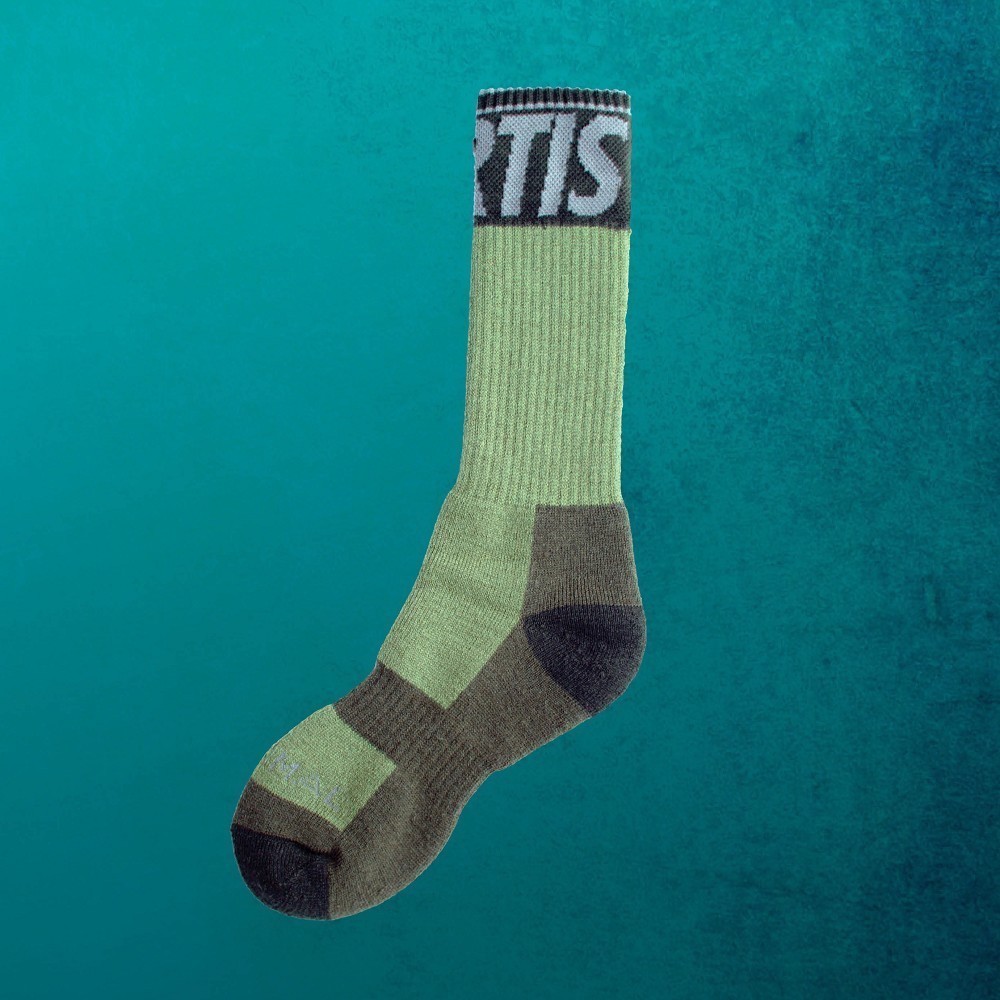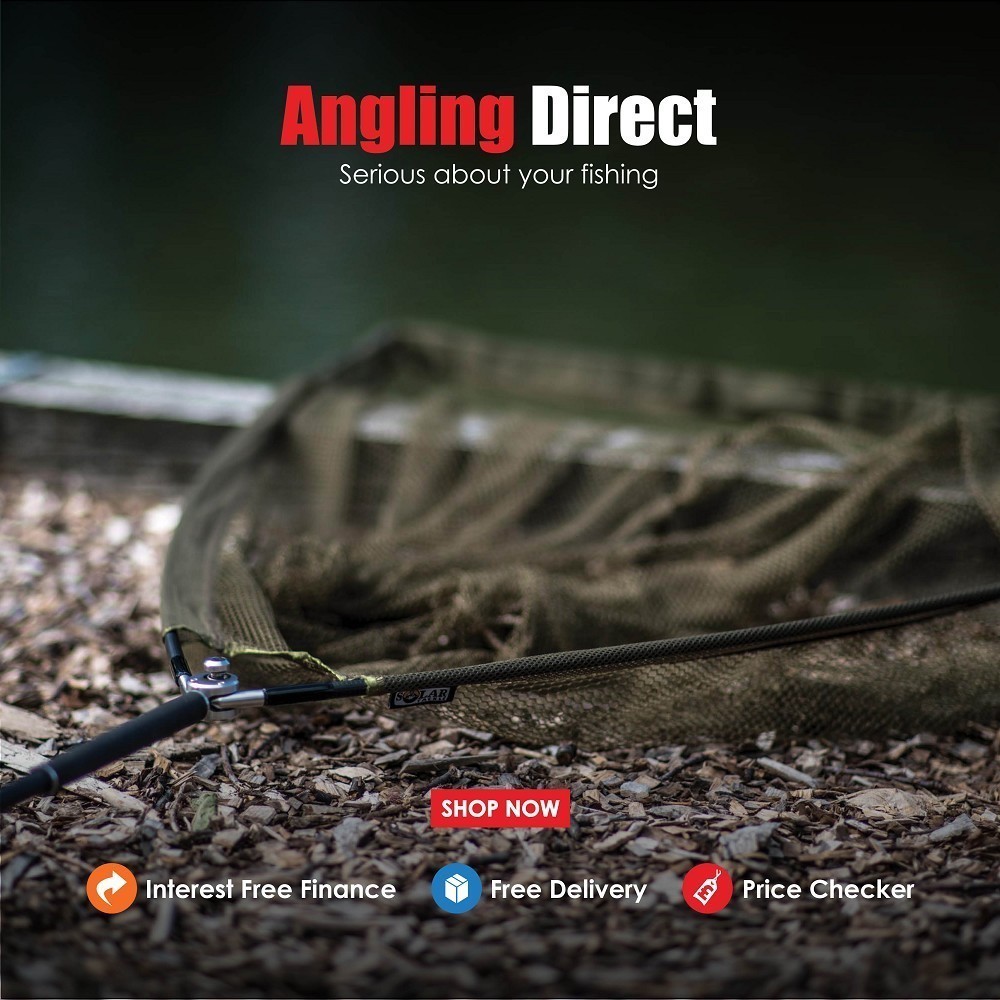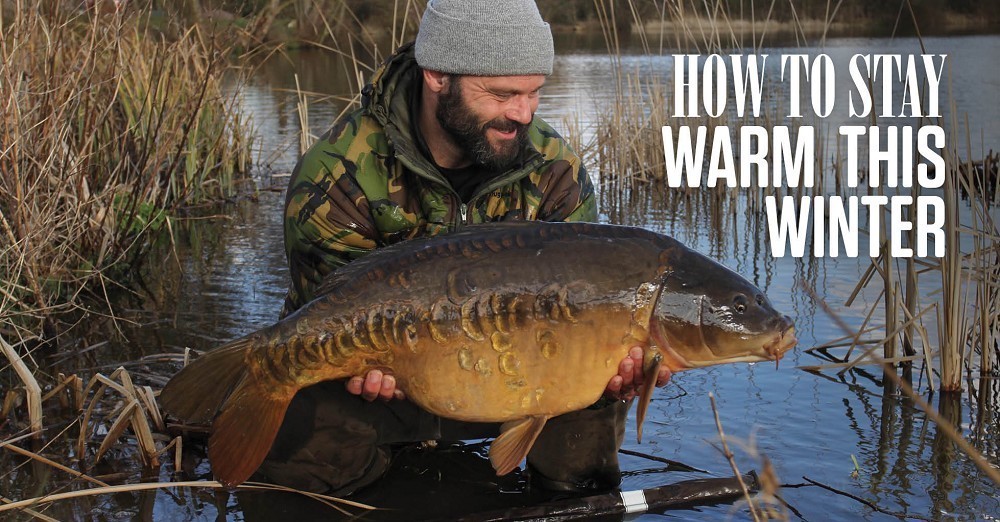
How to stay warm this winter
With the correct clothing, you can be out capitalising on the quieter banks
Enjoying the winter fishing season to its fullest extent requires you knowing how to dress. With the correct clothing, you can be out capitalising on the quieter banks, when fish are not only looking their best but swimming around at their largest too! However, if you’re unprepared, you won’t fish effectively, and your experience is likely to be a dull, shivering, blank.
Modern tech
We often get asked at the shows and on social media: “What shall I wear under my Fortis x Snugpak Jacket? I usually just wear a couple of hoodies.” It’s no secret that layering is the key to keeping warm, but as with all things, there is a right and a wrong way to achieve it. Your lucky T-shirt from the summer campaign has no place now, as cotton, believe it or not, retains moisture and as a result loses its warmth and causes too much evaporative cooling. Great for summer, but a big no in the cooler months.
Angling can be a little behind in terms of technical layering when you compare it to what’s on the market in the mountaineering field where hypothermia and poor preparation can be the matter or life or death.
Modern technical clothing is designed to be worn as a layered system, whereby each garment serves a purpose in keeping you warm, comfortable and dry. This allows you to alternate the layers in different situations, for example that critical first lap of the lake where it’s easy to perspire, the wrong base layer can leaving you damp and soaked with sweat for the rest of the trip. Being able to remove your top insulating layer (jacket) so you get the shelter up and get the rods out easily in just your base and mid layer comfortably without being too restrictive but staying warm is key. Then once that’s complete, it can quickly go back on for when the waiting game begins.
Type of layers
I will list the different types of layers, which can be used alongside each other to provide the ultimate comfort in your pursuit.
Base layer
The base layer is the item of clothing worn closest to your skin, meaning it will absorb the most sweat. Its fundamental purpose is to keep you dry by pulling that moisture away from your skin, spreading it throughout the fabric. It should fit snugly, and also provide some insulation. Cotton is the worst material for this job, a type of polyester or wool should be worn. Polyester should not be associated with cheap or inferior, they are more cost effective than merino, but also less itchy, more durable and dry faster.
Your base layer’s key function is to manage the conditions right next to your skin. A base layer with a zippered neck is a great feature as the additional cooling of an open neck is great when you are working hard, and can easily be zipped back up when you are taking a rest.
Mid layer
The mid layer’s purpose is to capture warmth through trapped air. Mid layers are usually a wool or fleece material and shouldn’t be as tight fitting as the base layer, so some loft will help trap the air, but at the same time be breathable so it does not become sweaty. A full-length zip on the mid layer makes it easy to regulate heat, and a hood is also a good option, because it offers a substantial increase in warmth for next to no added bulk or weight.
Insulation layer
A thicker ‘mid layer’ which is usually synthetic or down, provides extra insulation at a much higher warmth-to-rate ratio. We often to refer to it as the ‘Jacket’. We prefer a synthetic filling, as down doesn’t provide warmth when wet, ultimately the difference between a good or bad session. It should not be heavy or bulky, it should be able to fit over your fleece and also under an outer shell if the going really gets really tough. Breathable and windproof in equal measures to keep out any chill, and the warmth in. In all but the worst wet conditions, your insulated layer can also be your outer layer too. It will keep you warm on those long dark nights.
Outer shell
The rain jacket. It should protect you against the elements, but also not comprise the rest of your system. Breathability is a must, or you can be wetted out. This shell can be left in the rucksack for when you really need to be out in the rain for prolonged periods. If your insulated layer has a DWR (durable water repellency) you may not need to take a separate outer shell, so do check.
The importance
I really can’t over emphasise the importance of a good layering strategy for whatever campaign might lie ahead for you. You can adapt the basic layers above to your own adventure, adding or tweaking things for the nature of your undertaking. The bottom line is, that if you have the right clothing, in the right order, and are prepared for whatever weather unfolds, then you’ll have more enjoyment and spend more time pursuing your ultimate goal.
What is wetting out?
Wetting out occurs when the water vapour condenses on the inside of the waterproof layer, you have simply got wet from the inside out. As your waterproof layers start to saturate and wet-out, more and more water vapour will condense on the top of the insulating mid-layers. In colder conditions, you will now start to chill, as the water vapour condenses in the material fabric of your insulating layer. If insufficient or inappropriate layers are worn, and in less than ideal conditions, including increased wind speed or cooler ambient temperatures, the risk of hypothermia quickly becomes a problem.
Learn to layer
1. Make sure you have a good wicking base layer, such as the Elements Base Layer, this will help move cold perspiration away from your skin and into the insulation layer.
2. In wet environments, synthetic insulation is preferable to down insulation. When Softie® Premier (Fortis jacket filling) gets wet, it will still retain its thermal properties and keep you warm (but wet!). Down insulation, feathers, clump together, losing their thermal properties, making you cold and wet.
3. Keep drinking fluids, preferably warm drinks (tea!) if you have them, even if you are not feeling thirsty.
4. Carry spare and additional base and mid layers for insulation. The perfect compliment to the SJ3, FJ6 or SJ9 are the Fortis X Snugpak Salopettes.
5. Don’t overheat! Use zips to regulate temperatures & keep you comfortable.
The ultimate cold weather garm package
This layering system allows you to quickly adapt to changing weather conditions. It regulates your temperature during periods of high and low activity and draws moisture away from your body to prevent you from becoming cold and uncomfortable. The new Elements range’s primary focus is to deliver superior high quality technical garments to match your dedication and combat the extremes mother nature will throw at you. Targeting the ultimate prize throughout the cold months demands unwavering determination and utmost confidence in your gear. Stay protected and focused on the objective with the definitive layering system that’s built to resist the harshest of conditions.
SJ9 Insulated
Keep snug down to -15şC courtesy of the gritty British military-dressing brand, Snugpak and their amazing Softie Premier filling. Wind, light rain and breathability are dealt with thanks to the Paratex Light outer material – a closely constructed fabric with a ripstop construction which is drenched in DPM camo. The tailored design, extended back and slightly longer arms make it a joy to wear whilst watching the water or whacking a single at the horizon. £149.99
Elements Tech Fleece
This is your mid layer garm. Full fleece, 320g/m2, and should be worn over the Half Zip and under a Fortis x Snugpak Jacket for superior warmth in the harshest environment. £69.99
Elements Half Zip Top
The ultimate insulating top you won’t take off and is the perfect base for layering with the Snugpak X Fortis Jackets. 225g/m2; high wicking moisture control; can be worn directly against the skin for maximum freedom of movement and comfort. Scooped front and back for increased coverage, thumb holes to avoid bunching and increasing comfort and a Neck Zip for ventilation. £49.99
Elements Thermal Base Layer Bottom
The most perfect bottoms to dress your legs in and to wear beneath the Snugpak X Fortis Salopettes. Just like the Half Zip Top, these should be worn directly against the skin and come with elasticated waist and ankles to avoid bunching for a perfect fit. £36.99
Thermal Sock
Your feet need as much protection as your head and this is the ultimate thermal sock. Fully cushioned, they provide maximum warmth and comfort thanks to being fast wicking, fast drying and ultra tough. £12.99




